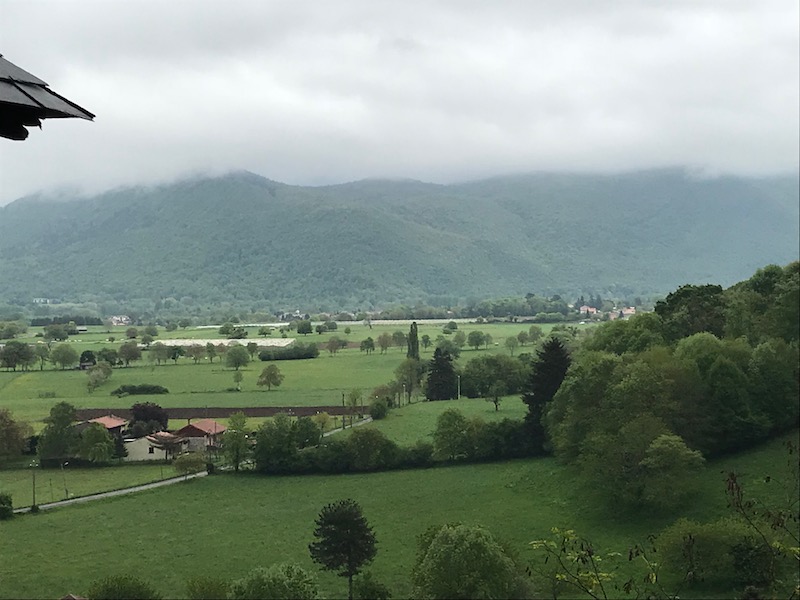Our Blog - Saint-Bertrand-en-Comminges
The weather is turning nice, and we have started back to scheduling golf in the middle of our other activities. That still leaves the weekend (since we don't play golf on the weekend, only during the week) to see all the various cultural sights in France. Sundays are always a bit "iffy" as some sights are not open on Sundays other than in July and August. But Saturdays are normally pretty good for road trips. In this weeks "Côté Toulouse" had a set of balades (little excursions) outside of Toulouse, so we picked one, and off we went. Todays destination? Saint-Bertrand-de-Comminges
Saint-Bertrand-de-Comminges is about 90 minutes from Toulouse heading South towards the Pyrenees. It is still in the Haute-Garonne department and is part of Les Plus Beaux Villages de France ("The Most Beautiful Villages of France") association. This is another village which dates back to Roman times. In 72 BC, a Roman general founded a Roman colony here on his way back to Rome from a military campaign in Spain. The Roman colony got quite large, normally 10,000 people but some say it reached 30,000 people at its' highest point. Fast-forward to 1083, and a knight named Bertrand de l'Isle-Jourdain became Bishop of Comminges and ordered the construction of a cathedral, which became a stopping point along the pilgrimage route to Santiago de Compestela. Bishop Bertrand de l'Isle-Jourdain was canonized and became Saint-Bertrand in the 13th century, and the town was renamed.
Trivia note: During the 2012 Tour de France, the cyclists went through this town and the one right next door (we saw a plaque/mosaic on one of the houses along the route).
We'll start back in Roman times, with the Roman colony named Lugdunum-Convenae, which was built on the plain just below the current "High Town" (up on a rocky outcropping). The colony included a temple, a forum, two sets of thermal baths, a theater, and a military camp. Many of these are clustered together and been excavated. The main thermal baths, which you can see the remnants of here, included a pool and 3 different bath rooms: a frigidarium (cold water), a tepidarium (hot and dry), and a caldarium (hot and humid). These date back to the 1st century

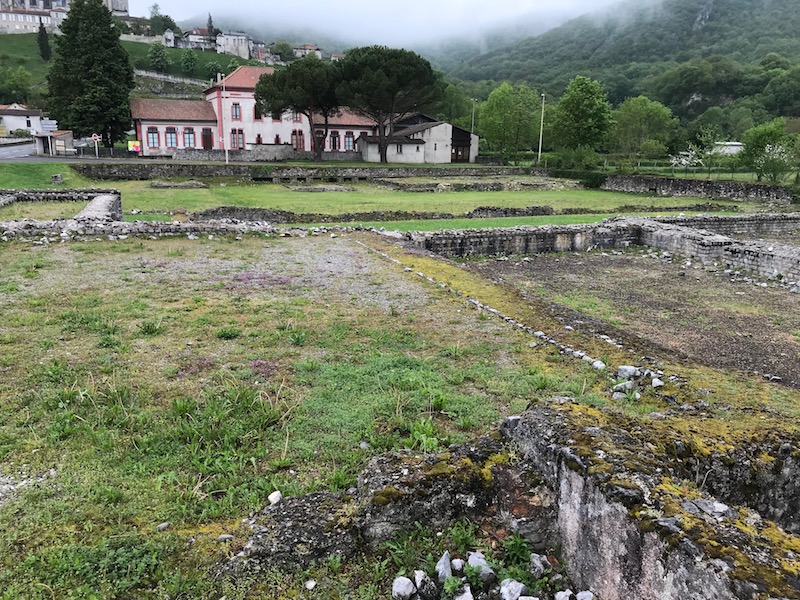

Across the street from the baths is the macellum or market area. This was built between 15 and 40 AD and was at the edge of the central place of the town. There are various small stalls where merchants would be selling things. It was one of the largest markets to be uncovered within the Occidental provinces of the Roman Empire.

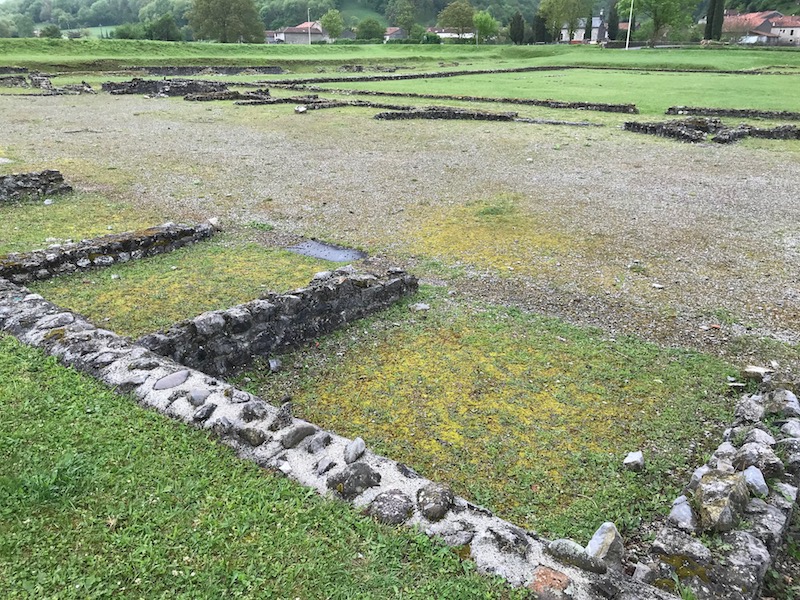

And here we'll start mixing ... if you look at the bottom of the first picture, you can see the Roman Theater, which is built into the hillside, with the cathedral up above it. There is almost nothing left except for a few seats and some stairs. You can also see a further-away view of the thermal baths (from the theater) and then we turn back around to the cathedral and the town up on the hill.
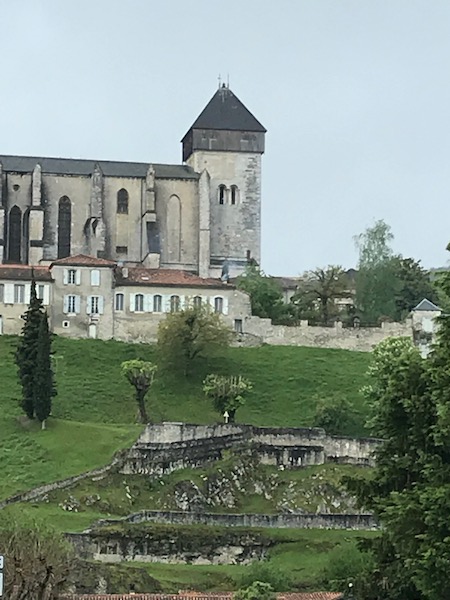

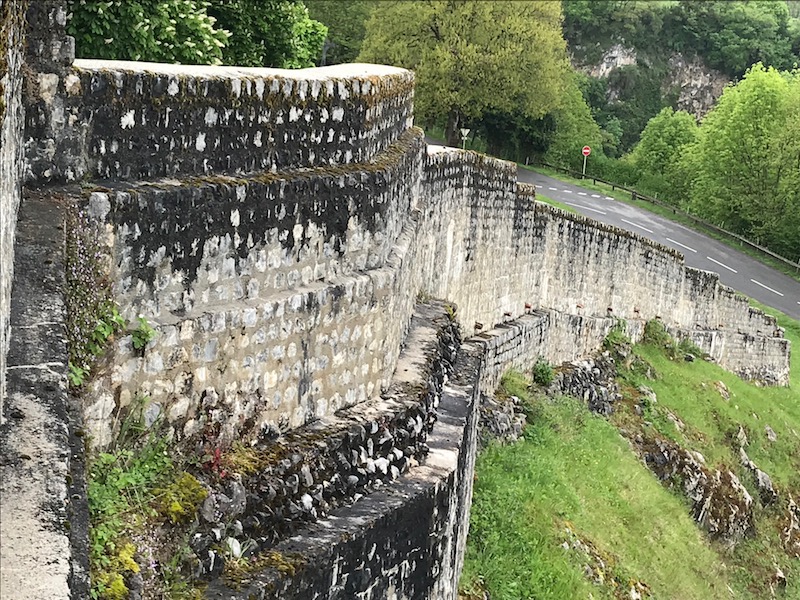


Porte Majou, or Major Gate, was the principal gate into the upper town starting in the 15th century. There are several Roman elements that were built into the wall and gate. On the inside, you can see a small window above the gate where the gatekeeper would have stayed (later turned into a tiny prison cell).
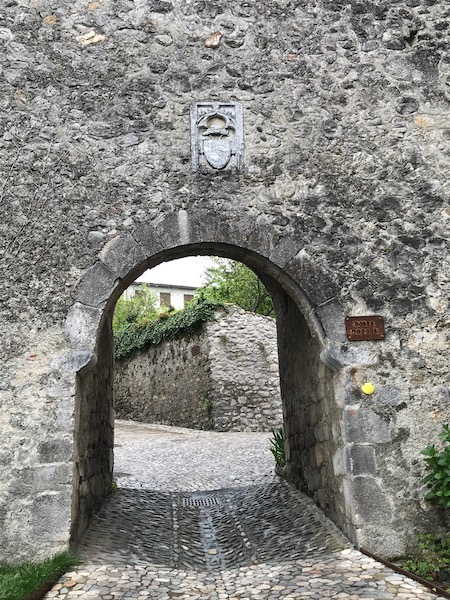
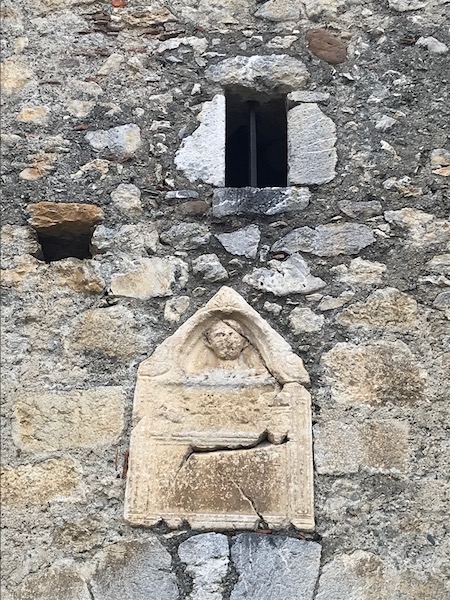
And then a few views of just the medieval town, with it's narrow roads that wind around the hilltop.

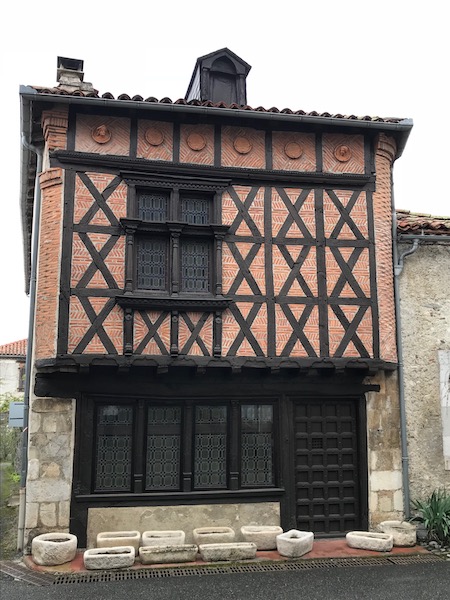

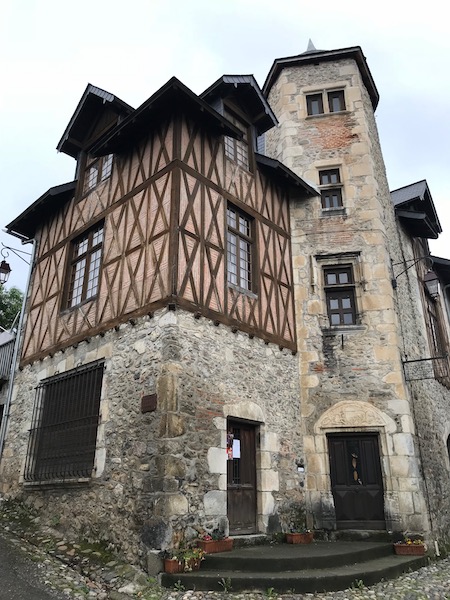
This is the Olivetans, a former 19th century convent that was acquired in 1985 by the City Council and made into a small tourist office. There is also a small museum there which houses "The Augustan Throphy, which are parts of marble statues dating from between 16 and 13 BC, which were partially destroyed.
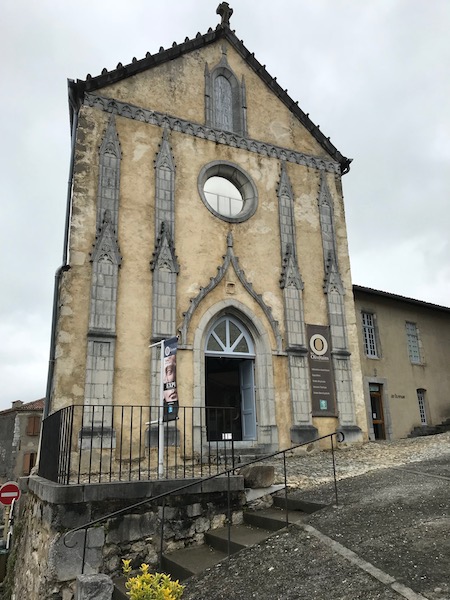
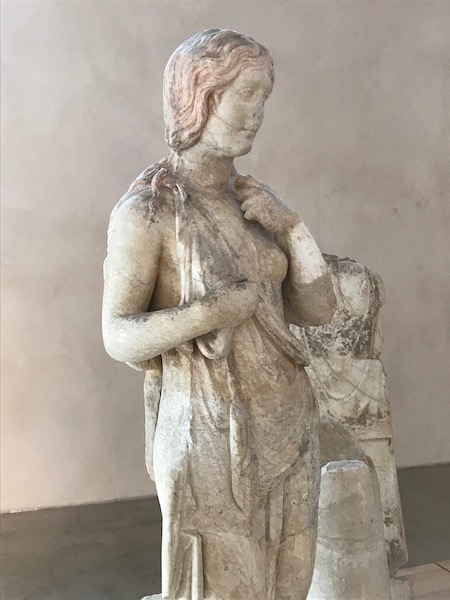
Port Cabirole is another one of the gates into the city, this one has an interesting plaque on the outside, which lists the "tax" required by Louis XIV on various types of fish coming into the town.

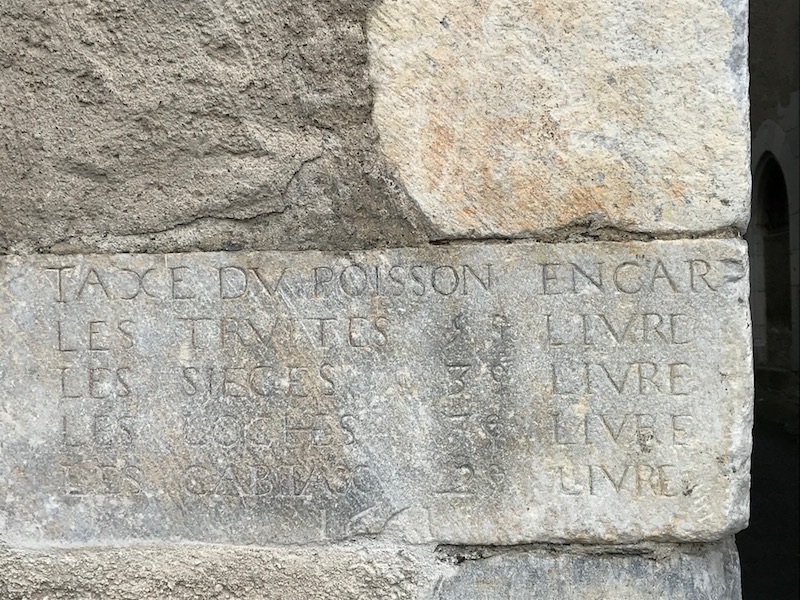
Here we can see parts of the exterior of the Cathedral, although really not that impressive compared to some. You can see the large flying buttresses on the exterior, which allows the high vaults on the interior. The odd part of this (for me), is that the very top of the Cathedral has a wooden building, which was a watch-tower and shows how the Cathedral was also used for defense of the town.

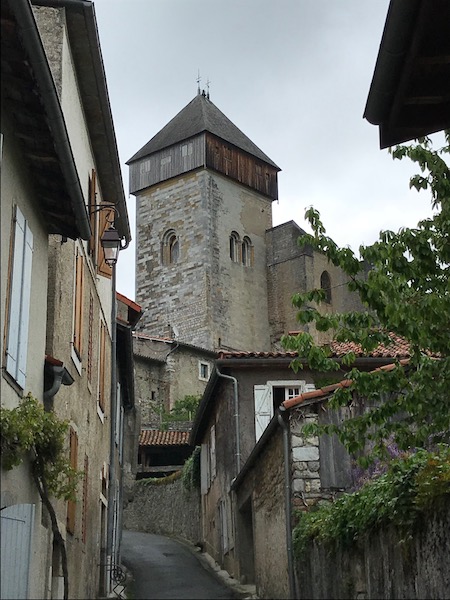
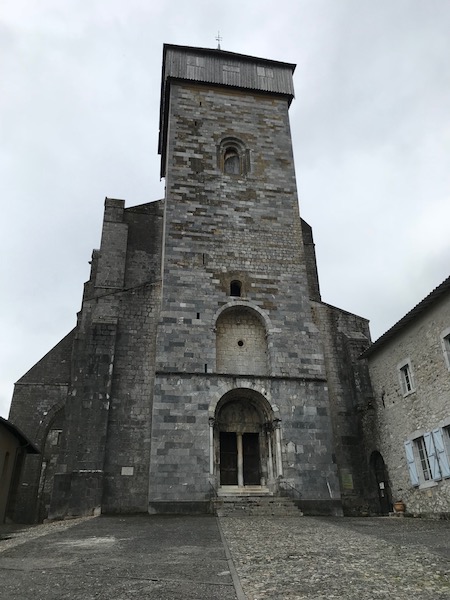
This is the entrance to the bell tower There are various parts to this ... The columns at the edges are actually re-used from some Roman temples as is the semi-circular tympanum. The lintel below that has a row of the 12 apostles and then above that is the Roman tympanum depicting the Adoration of the Magi, then the christ child sitting on Mary's lap (mind you, the baby Jesus has a crown and a beard!), with the angles above them. To the right of Mary is actually Saint-Bertrand, welcoming people to his Cathedral.


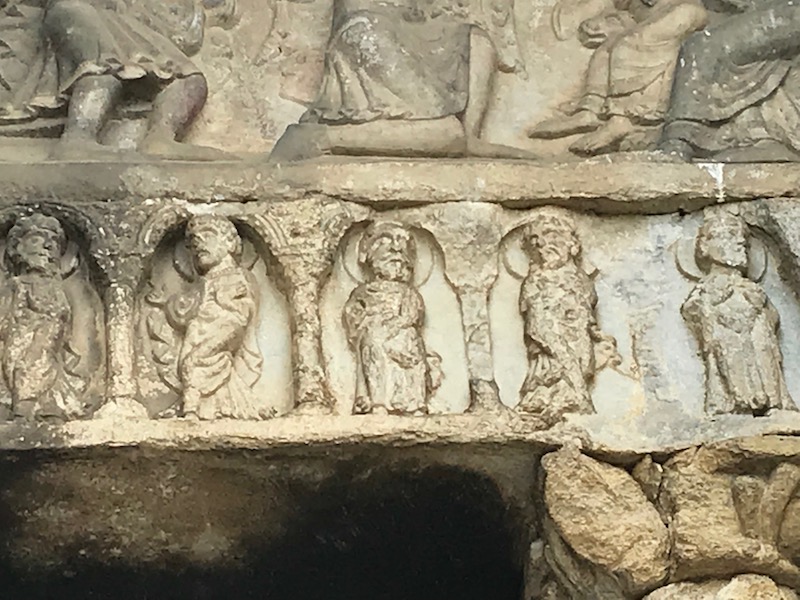

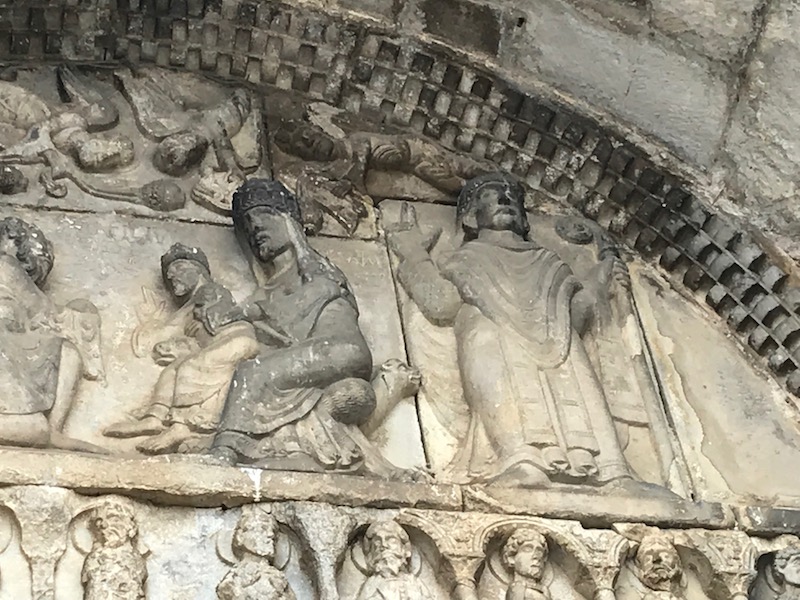
As you walk in, you get a more full picture ... the high vaults and stained glass. However, this church is very unique on the interior, as it still contains the rood screen and isolated choir. The first part of the church, from the door to the rood screen, is where the townspeople would come for their worship, and it is the 12th century Romanesque part of the Cathedral. It was expanded in the 14th century with the addition of a large, single nave in Meridional Gothic style. Additional changes were done in the 16th century in Renaissance style, including the addition of the Organ and it's amazing cabinet.
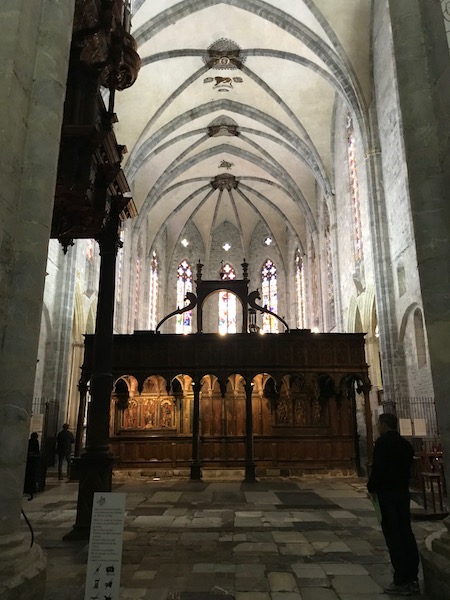
In the space between the entrance and the rood screen is the gallery that would receive parishioners and pilgrims. In one corner is a majestic organ. The Renaissance sideboard containing the organ sits up on five fluted columns with sculptures dealing with secular subjects such as country scenes as well as the works and exploits of Hercules. The pulpit is also carved of wood and was integrated into the organ sideboard.

The Rood Screen, which separates the fore-nave from the choir, is richly decorated in carved wood. One section, which was previously an altar in a different church and integrated here, still has its vivid colors.
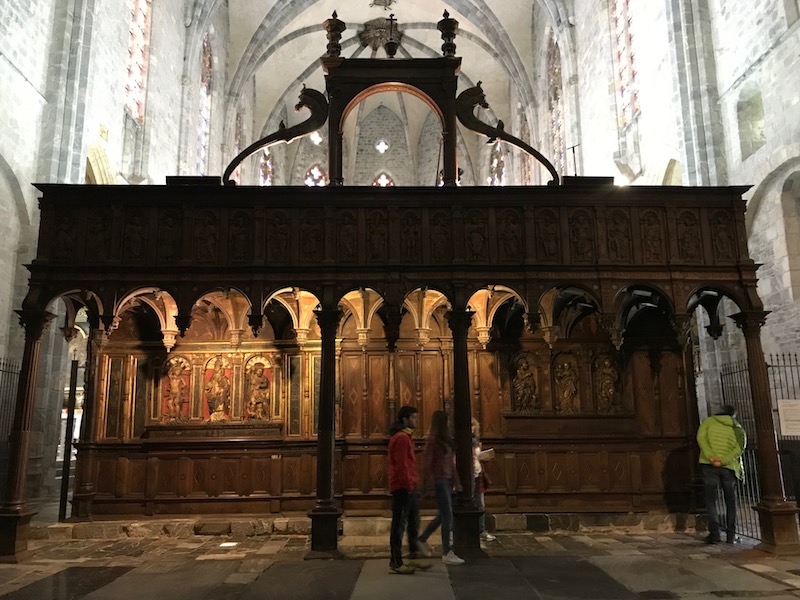

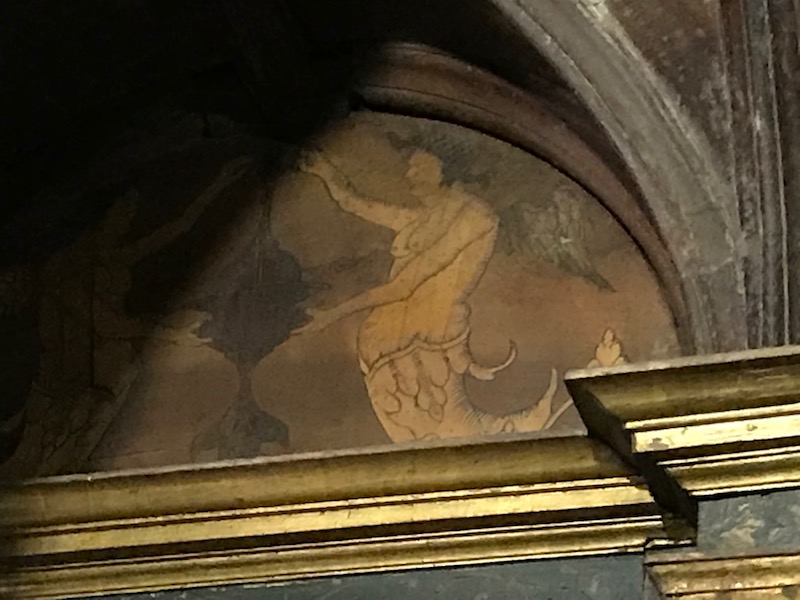
There are 11 chapels, including the Notre-Dame chapel which contains the tomb of Hugues de Castillon, who was the Bishop here from 1336 to 1352. The white marble tomb even has a lion and a dog at the feet.
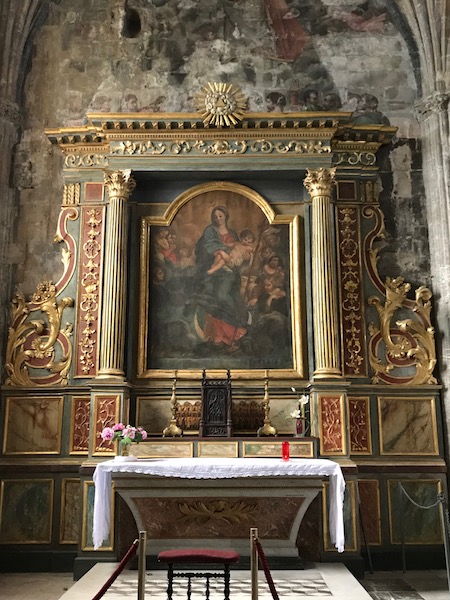


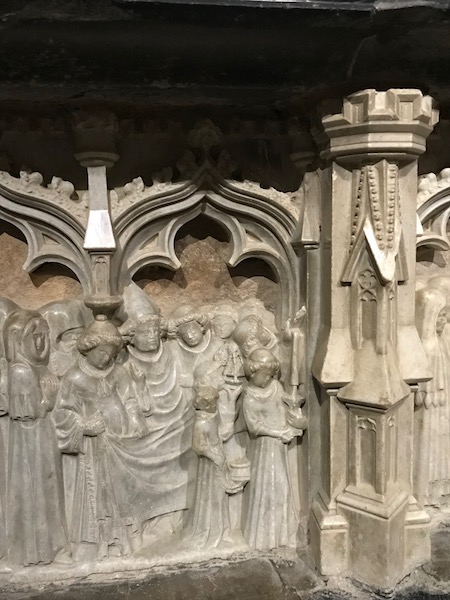
The ceiling shows the Gothic arches with the coats of arms of the founding bishops.
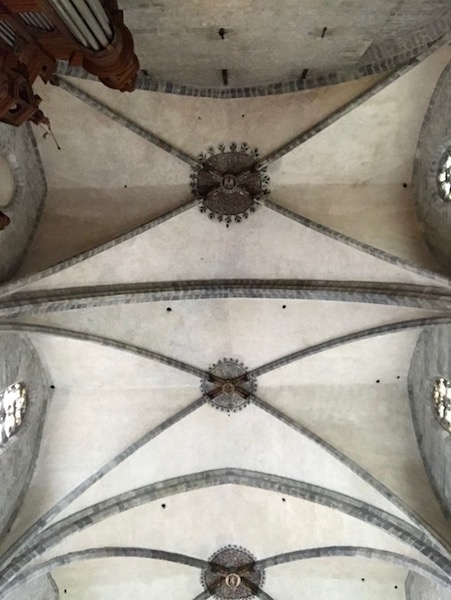

In the 15th century, a mausoleum was erected to hold the relics of Saint Bertrand. There are six 17th century stone paintings reproducing the miraculous scenes of the Saint's life.
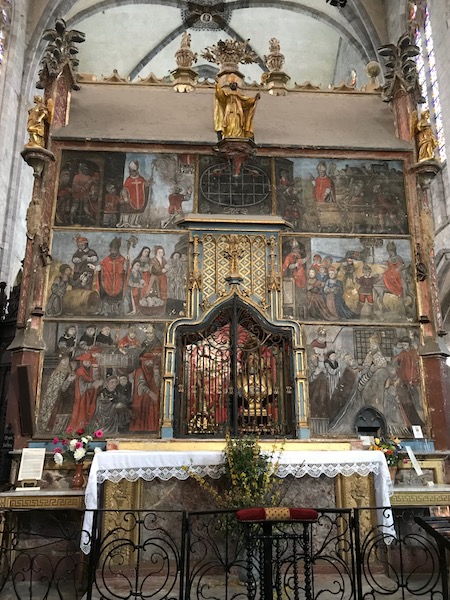
What takes up the most space in the Cathedral is the choir and the sanctuary. The Renaissance carved-wood choir is the masterpiece of the Cathedral. There are 66 stalls arranged in 2 rows. I tried to get a few closeups to really show the detailed carvings.
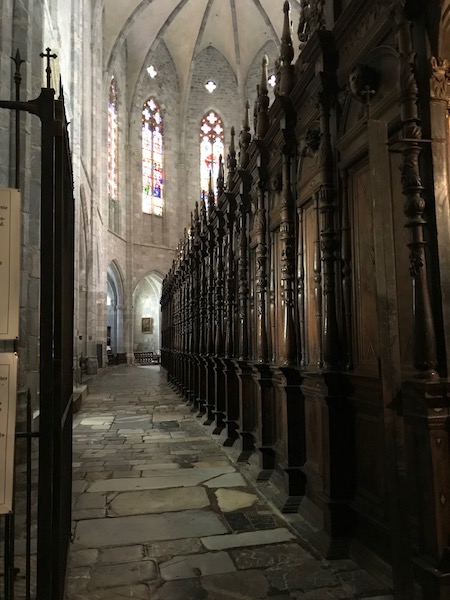
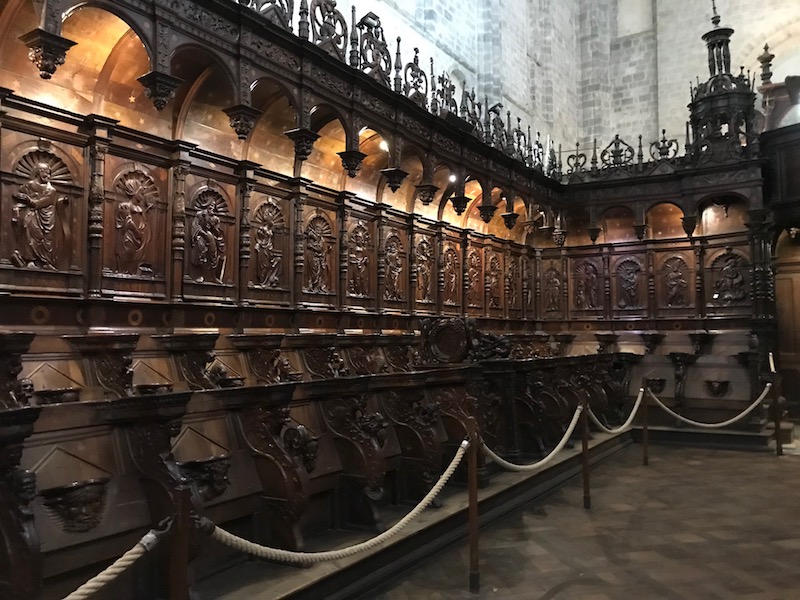


Then the sanctuary altar, which is bright with its gold and blue colors. In the middle you see Mary seated with the baby Jesus, and then above is God the Father. What was hard to get a good picture of is that between them hangs a dove of peace.
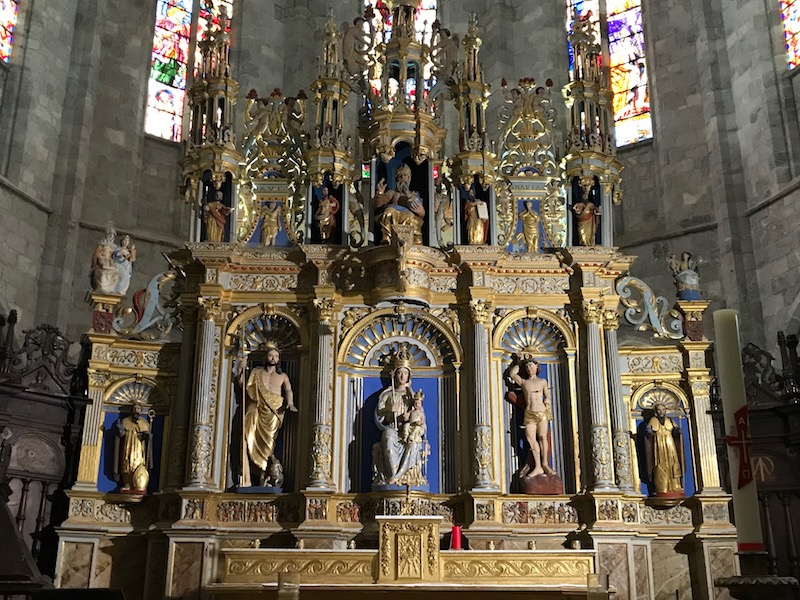

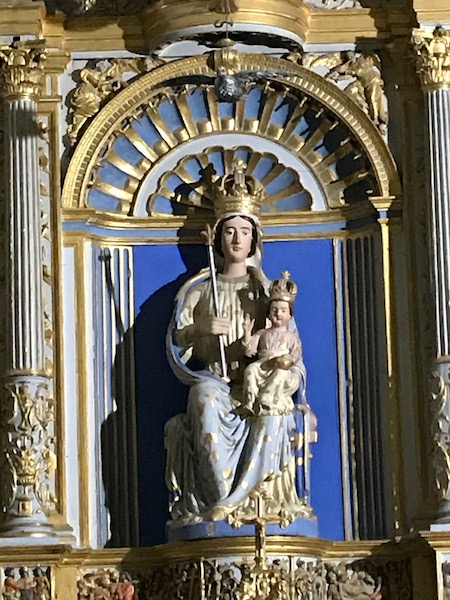
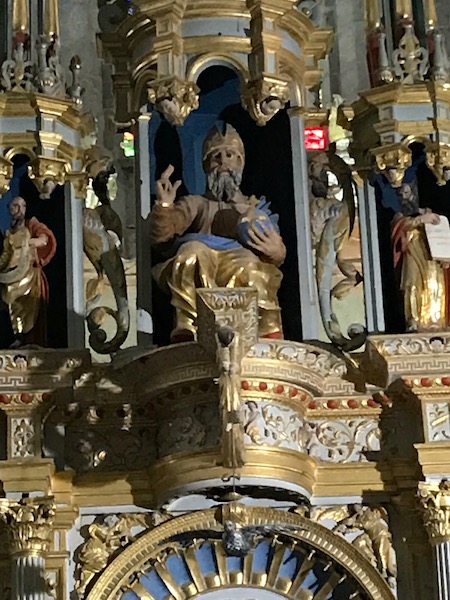
Most of the stained glass in the Cathedral dates back only to the 1930's. The exception are these 3 windows. Mind you ... these windows don't actually go together and they were created out of the undamaged panes from all of the other windows in the church. They took what they could and put them together into these three windows.

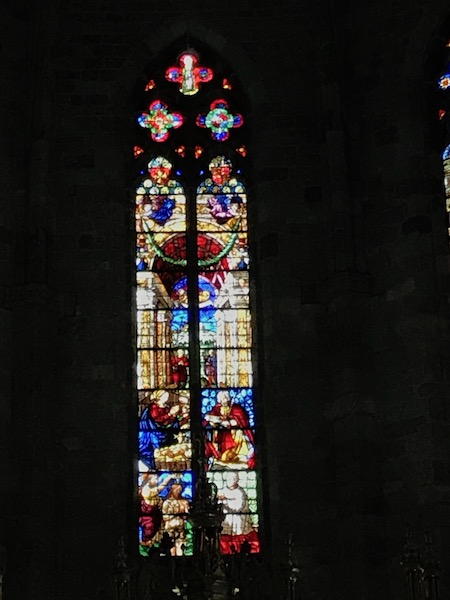

The Cloister was built for the canons as a place of prayer, meeting, and relaxation. The first 3 galleries are Romanesque and date to the 12th century, with arches resting on a double row of columns with decorated capitals. There is one large column with 4 different Evangelists carved. Then the last gallery, that which is up against the Cathedral, was redone in the 15th and 16th centuries and you can definitely see the style difference, done in Gothic style and containing the graves of 7 canons.
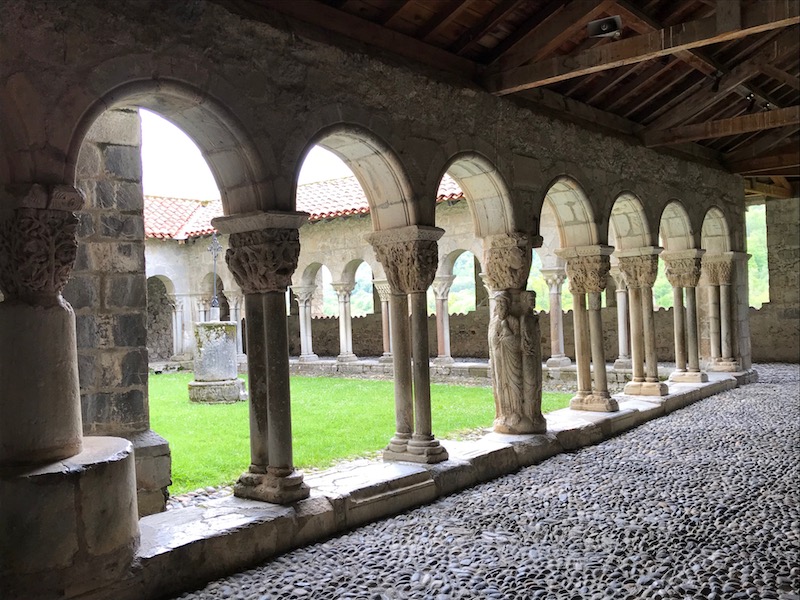
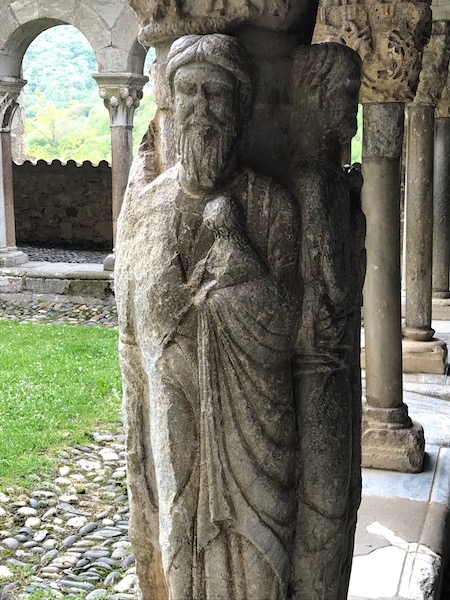
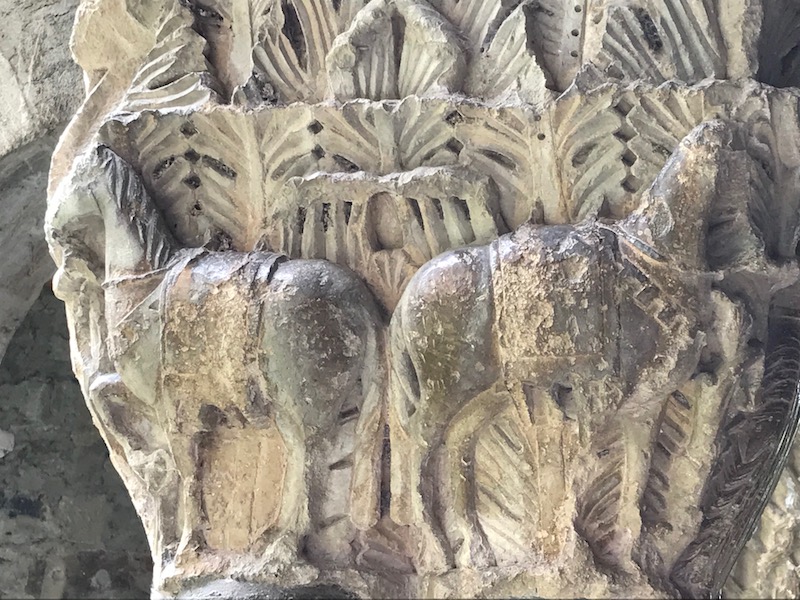

This was one of the various items that was in the Treasury. This dates back to 1309 from Pope Clement V. Pope Clement V was the Bishop from Saint-Bertrand-de-Comminges 10 year before this, and he came to honor Saint Bertrand. On this occasion, he gave the Cathedral two capes which had been embroidered in London. This one is called the Cape of the Passion and shows scenes from the Passion of Christ. The first is not the best picture, and then I got what I think is a pretty good closeup.
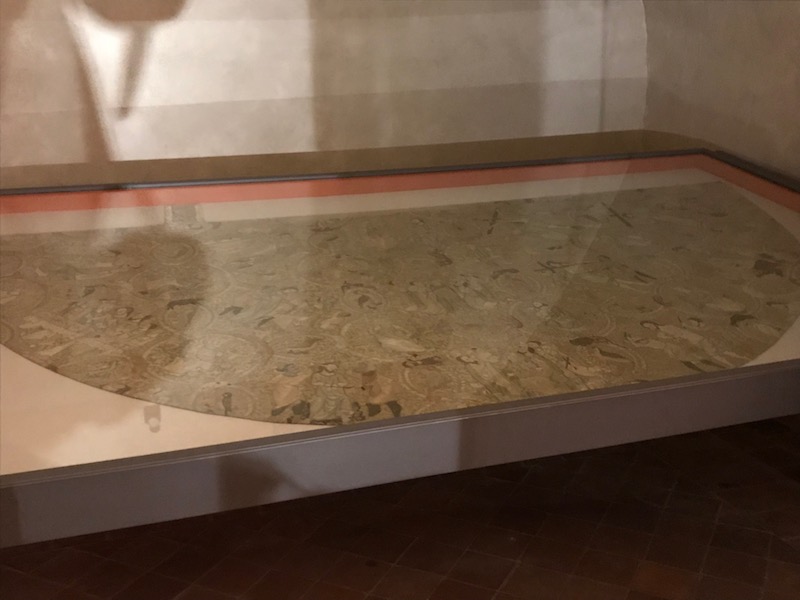

And a view of the countryside ... you can see the foothills of the Pyrenees there, with a bit of cloud-cover.
